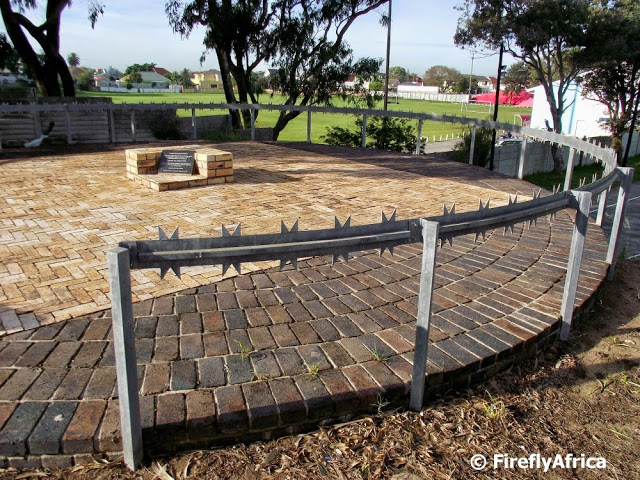
Today’s post basically is a report of a post I did in 2014. It’s one of those little pieces of Port Elizabeth information that very few know about and is worth reposting.
When you mention the word concentration camp most people would probably associate it with the Germans during the second World War. Few know that concentration camps were first implemented in South Africa by the British to hold Boer women and children during the Anglo Boer War (1899 and 1902).
There were two concentrations camps in what is today known as Nelson Mandela Bay. One in Uitenhage and one at Kemsley Park in Port Elizabeth. The concentration camp in Port Elizabeth operated from December 1900 until approximately November 1902. It held an average of 230 children and 86 women housed in corrugated iron huts encircled by a high barbed wire fence. There was also a separately fenced camp for 32 men in tents. There were very few deaths in this so-called “model camp” compared to the thousands that died in the other camps. Only 12 deaths were recorded over the period it was in existence. This camp housed mainly Boers from the Free State from Jagersfontein and Fauresmith, among them General, and later Prime Minister, JBM Hertzog ‘s mother, wife, three sisters in-law and their children. The camp was closed in November 1902, and subsequently, a monument was erected at the Kemsley Park site. A monument and plaque at North End Cemetery have the names of the 14 people who died in the camp on it.
The PE concentration camp was the first to be erected in the War. This was not the only place where 'foreigners' were houses in the city though. Refugees – Anglophiles fleeeing the Rand – were also housed at the old Fairview racecourse, now the site of Greenacres, and a camp for single men was set up in Prince Alfred's Park, now the site of the Nelson Mandela Bay Stadium. The Uitenhage camp was erected in April 1902 to alleviate the concentration camp crisis based on the recommendations of Emily Hobhouse and implemented by the the Fawcett Commission. It is sad that we as humans sem to revel in misfortune, and heavily popularise the high mortality rates of other camps such as Bethulie and Springfontein, but so easily forget that in many other camps the detah toll was much lower. In Uitenhage only 9 lives were lost, and in PE only 14. These cases were 901% of the times of natural causes, and our two camps are truly stories of hope.If anyone would like more information on both camps ( and I'm sure Firefly will permit me to share it) please email me on roche@hunkydory.co.za
When you visit this site it's hard to imagine that a concentration camp had been sited there and can only wonder at what took place. It is no wonder there was so much anti-British sentiment in SA for so many years, when you hear about the many women and children who died in these camps. As an English speaking South African I had the deeds of the Brits thrown in my face on many an occasion, when I was a kid living in the good old Transvaal. The irony though, was that all my ancestors fought with the Boers, even my great grandfather who emigrated from Germany and who became a Transvaal burgher. The brother of one of my forebears was also executed by Breaker Morant.
http://www.angloboerwar.com/other-information/88-concentration-camps/1833-concentration-camps-locations12 deaths for children under 15 years old NATURAL causes?
I did not know that.
I didn't know there was one in PE. Gosh. Tragedy.
Judging by the photograph it appears as if the site has recently been 'rehabilitated'. That's good news and thank you to whoever was responsible for that. I've been aware of the site for close on to 50 years and have looked for it many times without success. All that I ever found, most disappointingly so, was a sign on the fence where the memorial now stands. I spoke to many people about this; the camp, memorial and sign on the fence and most knew nothing about it at all. A few knew about the sign on the fence and that was all. Eventually I gave up hope of ever seeing the memorial. It's good to see that, at last, there's something substantial now on display.